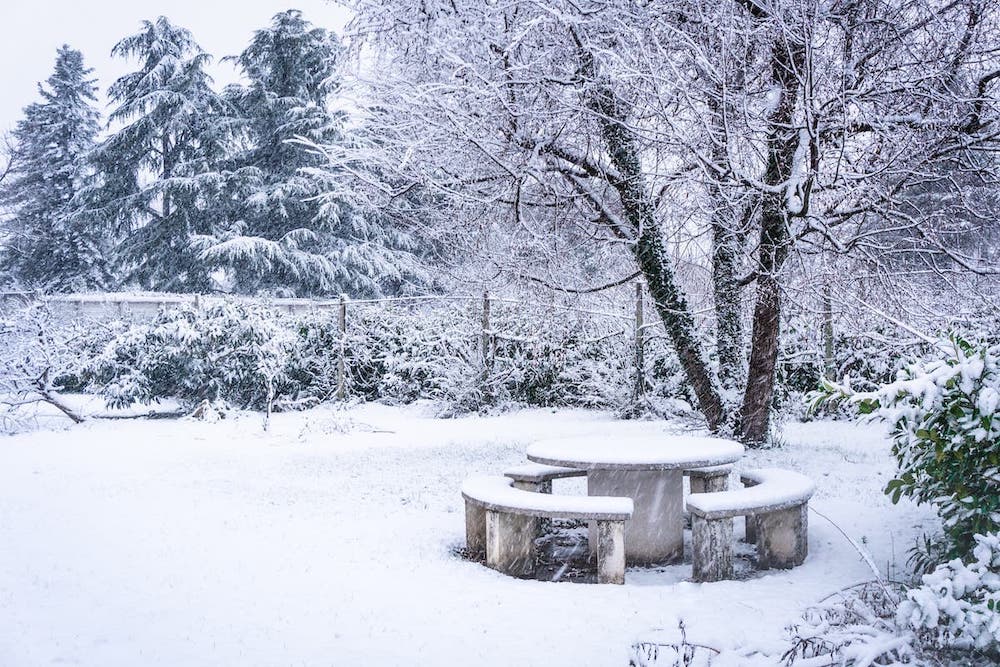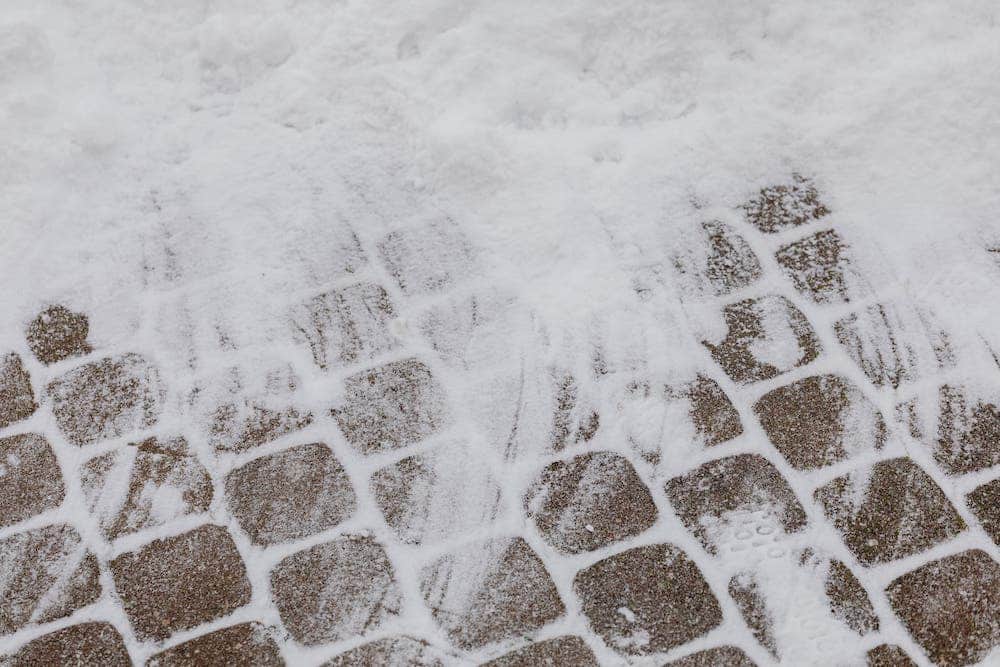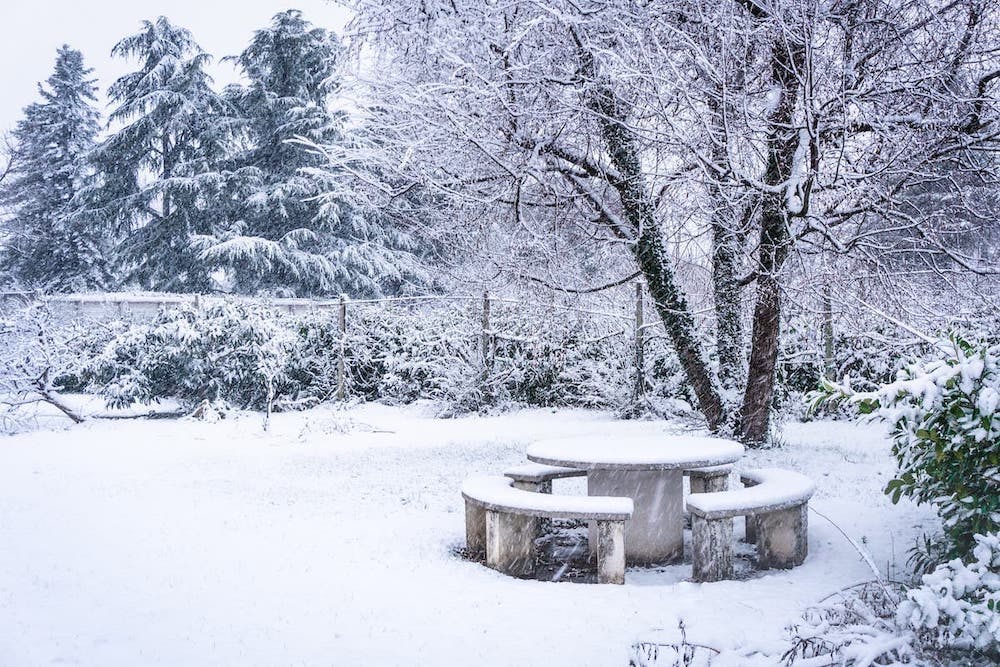As the weather gets colder and the days get shorter, it’s important to start thinking about preparing your garden for winter. This may seem like a daunting task, but a little bit of planning now can save you a lot of work later. From cleaning up dead leaves and debris that prevents diseases and pests from overwintering in your garden to trimming back any dead or dying plants so that they encourage new growth in the spring, there are many things that you can do. Here is a comprehensive guide on how to prepare your garden for winter.

Get rid of dead plants
One of the most important tasks for any gardener is to keep their plants healthy and free of disease. However, even the most carefully tended gardens can be susceptible to problems. If you notice that one of your plants is diseased, it’s important to take action immediately in order to prevent the problem from spreading. This will help you prepare your garden for winter better.
The first step is to remove the affected plant from the garden. This will contain the disease and prevent it from infecting other plants. Once the plant has been removed, dispose of it in a way that won’t spread the disease, such as by incinerating it or sealing it in a plastic bag. Next, disinfect any tools or equipment that may have come into contact with the plant. Finally, wash your hands thoroughly to avoid spreading the disease accidentally.
Remove invasive weeds
Apart from eliminating diseased plants, another important aspect of keeping your garden healthy in winter is removing invasive weeds. These unwelcome intruders can quickly take over your flower beds and choke out your plants. However, getting rid of them can be a challenge, especially if they have already taken hold. The key is to act quickly and remove them before they have a chance to spread. Here are some tips for removing invasive weeds:
- Use a weed killer – If the weeds are already well-established, you may need to use a chemical weed killer to get rid of them.
- Pull them up by the roots – This is the best way to ensure that they don’t come back.
- Dig them out – If the weeds are growing in between paving stones or other hard-to-reach places, you may need to dig them out with a trowel or spade.
- Smother them with mulch – You can also kill weeds by covering them with a thick layer of mulch. This will block out the light and prevent them from growing.
- Burn them – If you have a garden incinerator, you can burn the weeds. This is an effective way to get rid of large numbers of weeds quickly.
Prepare the soil
As any gardener knows, preparing the soil of your garden for winter is essential to ensuring a healthy and productive growing season. There are a few simple steps that can be taken to help ensure that your soil is ready for winter.
- First, it is important to remove any debris or dead leaves from the surface of the soil. This will help to prevent mould and mildew from growing, and will also make it easier for new growth to emerge in the spring.
- Next, you should add a layer of organic matter to the surface of the soil. This can be done by spreading a layer of mulch or compost. Adding organic matter will improve the quality of the soil, and will also provide vital nutrients for plants.
- It is essential to water the soil deeply before winter sets in. This will help to prevent the soil from becoming too dry, and will also encourage deep roots to develop.
Plant some cover crops
Any gardener knows that a deluge of rain, snow, and ice can quickly turn a beautiful garden into a muddy mess. Not only is this unsightly, but it can also damage plant life and impede growth. One way to help protect your garden during winter weather is to plant a cover crop. Cover crops are plants that are grown specifically to protect and enrich the soil. They help to prevent erosion, improve drainage, and add essential nutrients to the soil.
Leguminous cover crops, such as vetch and peas, are especially effective at fixing nitrogen in the soil. This helps to ensure that your garden will have the nutrition it needs to thrive in the spring. Another benefit of cover crops is that they can help to suppress weed growth. These crops also prevent soil erosion by stabilizing the ground and providing protection from the elements. Additionally, they improve soil health by adding organic matter and essential nutrients. In order to get the most out of your cover crops, it is important to plant them at the right time of year and to choose the right variety for your needs. With a little planning, you can use cover crops to keep your garden healthy all winter long.

Prune perennial plants
Perennial plants are a great addition to any garden, providing colour and interest year after year. However, they do require some care and maintenance to stay looking their best. An important task to take care of perennial plants is pruning, which helps to encourage new growth and keep the plant healthy. Here is a step-by-step guide to pruning perennial plants:
- Start by removing any dead or dying leaves or stems. These can be easily identified as they will be dry and brown.
- Next, trim back any overgrown or leggy stems. Cut these back to a point just above where there are leaves or buds present.
- Once you have removed all of the dead or damaged growth, you can then shape the plant by cutting back any remaining stems to the desired length.
- Finally, cut off any flowers that have already bloomed. This will encourage the plant to produce new flowers later in the season.
Pruning may seem like a daunting task, but with a little practice it will become easier and you will soon have healthy and beautiful perennial plants.
Plant bulbs in the garden
As fall approaches, it’s time to start thinking about winterizing your garden. One of the best ways to do this is to plant bulbs. Bulbs are easy to care for and will provide colour and interest in your garden even when everything else is dormant. When choosing bulbs, always go for those that are larger and have firm, unbruised skins. To plant them, simply dig a hole that is twice as deep as the bulb is tall. Place the bulb in the hole with the pointy end facing up, and then cover it with soil. Once they are in the ground, bulbs don’t require much care. Just make sure to keep the soil around them moist until they start to sprout in the spring. With a little advance planning, you can have a beautiful garden that will thrive even during the coldest months of the year.

Paving your garden
Many gardeners are surprised to learn that paving can actually be beneficial for their gardens during the winter months. By creating a paved surface, gardeners can help to prevent problems such as soil compaction and root damage. In addition, paving can control the growth of weeds and moss. It also keeps the garden tidy by preventing leaves and other debris from accumulating on the ground. All this makes paving an excellent way to prepare your garden for winter.
Mulch replenishing tips
Replenishing the mulch for your garden is an important way to keep your garden healthy during winter. Mulch helps to suppress weeds, retain moisture in the soil, and protect plants from extreme temperatures. It can also add a finished look to your garden beds. There are a few things to keep in mind when replenishing the mulch.
- Make sure to remove any old mulch before adding new. This will help prevent diseases and pests from being reintroduced to your garden.
- Choose the right type of mulch for your plants. Organic mulches, such as wood chips or leaves, are a great choice for most gardens. Inorganic mulches, such as gravel or stone, are better suited for areas that are prone to drainage issues.
- Be sure to apply a fresh layer of mulch evenly across the surface of your garden bed.
A garden is a year-round commitment, and that includes taking care of it in winter. While it may be tempting to let the garden go dormant until spring, it is crucial to keep up with basic maintenance throughout the winter months. A little advance planning can go a long way in protecting your plants from the cold. Insulating the roots of your plants and preventing them from being damaged by frost is often considered a popular technique. But there are many more ways to prepare your garden for winter. Make sure you follow the steps carefully so that your garden remains healthy during the cold months.

 whatsapp
whatsapp

